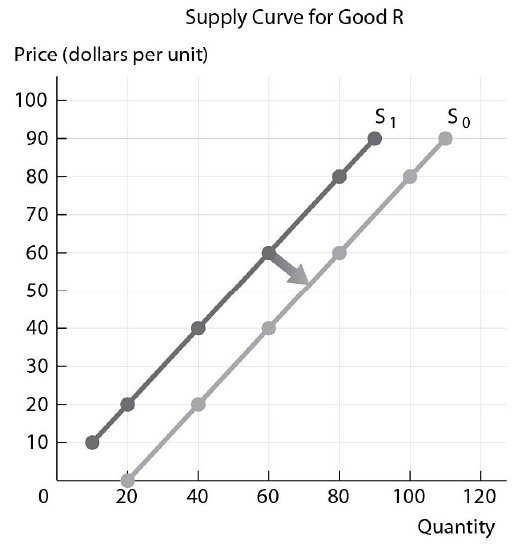Which of the following is not one of Rostow’s stages?
a. Traditional society
b. Take-off stage
c. Accelerated family development
d. Drive to maturity
ANSWER:
c
You might also like to view...
Refer to the figure below. Which of the following could have caused the shift in the supply curve?

A) an increase in the price of a substitute good in production
B) a decrease in the price of Good R
C) an increase in the price of a complement good in production
D) an increase in the expected future price of Good R
Which of the following is characteristic of foraging societies?
A) small group size consisting of related families B) semi-permanent settled villages C) social hierarchies reflected in ownership of land and wealthy possessions D) high levels of social differentiation
The path from foraging to food production was one that people followed independently in at least seven world areas. New archaeological research techniques continue to overturn previously held assumptions about where and how this occurred. Microscopic evidence from early cultivated plants suggests that
A. New World farming began in the lowlands of South America and then spread to Central America, Mexico, and the Caribbean islands. B. the old assumption that New World farming originated in the upland areas is correct. C. farming in the South American tropical lowlands preceded domestication in the Middle East by some 5,000 years. D. maize was first domesticated in the Pacific islands and brought to the Americas by colonizers who navigated to the western coasts of South America. E. all early domesticates originated among the Clovis people, whose knowledge then diffused southward.
What forms can negative reciprocity take?
What will be an ideal response?